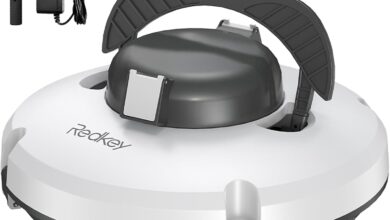
The processing of sheet metal, a specialized subset of metalworking, transforms basic metal sheets into intricate shapes and structures, which have a multitude of applications.
Fundamentals of Sheet Metal Processing
Sheet metal, essentially a thin metal plate, is available in a range of thicknesses. It can be composed of various metals, including but not limited to steel, aluminum, and copper. Specialized techniques and machinery are required to mold these sheets into the desired shape and size.
Key Processes in Sheet Metal Processing
- Punching: In this method, sheet metal is positioned under a punching head, which then forcefully strikes the metal to cut out specific parts.
- Bending: This involves reshaping the sheet metal into the desired form using specialized machinery or presses.
- Deep Drawing: This technique involves pulling the sheet metal into a die to create deep, hollow shapes.
- Welding: A process where two sheet metal pieces are joined by heating until melting point and then fusing them together.
Modern Technologies in Metal and Sheet Metal Processing
Recent decades have witnessed significant advancements in metal and sheet metal processing. The integration of contemporary technologies has enhanced precision and efficiency, and opened up new avenues for design and production.
Laser Cutting
- Function: Utilizes a high-intensity laser beam to slice through sheet metal. The laser is concentrated on a small area of the material, causing it to melt or vaporize.
- Advantages: Offers high precision, clean cuts, and the capability to intricately shape and pattern cuts. It is effective on materials ranging from very thin to thicker varieties at high speeds.
Plasma Cutting
- Function: Employs ionized gas at extremely high temperatures to melt and slice through metal.
- Advantages: Ideal for cutting thick materials, it provides rapid cutting speeds and is suitable for large-scale production.
Waterjet Cutting
- Function: Uses a high-pressure water stream, often combined with abrasive materials, for cutting purposes.
- Advantages: Generates no heat at the cutting site, minimizing material distortion risks. It’s also eco-friendly, producing less waste and no harmful gases or vapors.
Automated Bending Machines
- Function: These devices employ computer programming and precise sensor technology for automating the bending of sheet metals with high accuracy.
- Advantages: Increase production efficiency, ensure consistent product quality, and can produce complex bends and shapes.
Metal 3D Printing
- Function: Layers of metal powders and a binding agent are successively applied and then sintered in a high-temperature oven.
- Advantages: Facilitates the creation of complex and tailor-made metal parts, which would be challenging or impossible with traditional methods.
Modern techniques in metal and sheet metal processing are continually transforming the way products are manufactured. These methods not only offer enhanced precision and efficiency but also open new possibilities for engineers and designers to innovate and bring products to market more quickly. As technology progresses, we can expect the emergence of even more advanced methods, pushing the limits of what is achievable.
Sustainability in Sheet Metal Processing
As global resources dwindle and the environmental impact of industrial processes becomes a growing concern, sustainability in industry, including sheet metal processing, is increasingly crucial. Key aspects in sustainable sheet metal processing include:
Resource Efficiency
- Less Waste: Precise cutting techniques like laser and waterjet cutting minimize material wastage, which saves costs and reduces the ecological footprint.
- Material Recycling: Scrap materials are collected and recycled, as many companies have systems for metal scrap recovery and reuse.
Energy Efficiency
- Energy-Efficient Machinery: The latest sheet metal processing machines are designed to be energy-efficient, reducing both costs and CO2 emissions.
- Process Optimization: Modern software and automation are used to streamline workflows, further reducing energy consumption.
Use of Sustainable Materials
- Alternative Metals: The use of sustainably sourced or recycled metals is on the rise, often having a lower CO2 footprint than traditionally sourced materials.
- Eco-friendly Coatings: Environmentally friendly coatings and surface treatments are increasingly used.
Workplace Safety and Health
- Pollutant Reduction: Many sheet metal processing methods have been adapted to minimize pollutant emissions.
- Ergonomic Workplaces: Modern machinery and work environments are designed for ergonomics and safety, reducing the risk of work-related accidents and health issues.
Sustainable practices in sheet metal processing not only contribute to a better ecological balance but also offer economic benefits through resource efficiency and energy savings. This trend is expected to grow in importance as consumers and lawmakers increasingly value sustainable practices.
Conclusion
The field of metal and sheet metal processing is versatile and constantly evolving. With the advancement of technologies and methods, this sector offers immense possibilities in terms of design and functionality. It remains exciting to see how the industry will continue to evolve and adapt to the challenges of the 21st century.
Metal and Sheet Metal Processing | Hier geht es direkt zu Metal and Sheet Processing bei Amazon. |





